The ports of the Reykjanes Peninsula are located in the southwestern corner of Iceland, a region defined by its raw, volcanic landscapes and geothermal activity. The entire peninsula is a designated UNESCO Global Geopark due to its unique geology, where the Mid-Atlantic Ridge rises above sea level.
Serving as a gateway to some of Iceland's most famous attractions, the ports here are growing in popularity for cruise itineraries. Ships dock at working harbors such as Keflavík, offering passengers immediate access to a landscape of lava fields, steam vents, and dramatic coastlines, distinct from other Icelandic ports of call.
The most famous attraction in Reykjanes is the Blue Lagoon, a world-renowned geothermal spa. Located about 20 minutes from the Port of Keflavík, it offers a unique experience bathing in mineral-rich, milky-blue waters. Pre-booking is essential.
Explore the raw geothermal power of the peninsula at the Gunnuhver hot springs area, where you can witness powerful steam vents and boiling mud pools. Nearby, you can visit the iconic Reykjanesviti, Iceland's oldest lighthouse, which offers dramatic views of the rugged coastline.
A unique photo opportunity awaits at the Bridge Between Continents. This small footbridge spans a fissure, symbolically connecting the North American and Eurasian tectonic plates in the heart of the rift valley.
Last updated on June 20, 2025
Reykjavík, the vibrant capital of Iceland, is approximately a 45-50 minute drive from the main ports on the peninsula. It offers a wealth of museums, restaurants, and shopping opportunities for those seeking a more urban experience.
The Krýsuvík geothermal area is another popular nearby destination, featuring dramatic landscapes with mud pots and hot springs. It provides a fascinating look at the region's volcanic nature without the longer journey required for other famous sites.
For those with a full day and an organized tour, portions of the famous Golden Circle route may be accessible. This includes major attractions like Þingvellir National Park and the Gullfoss waterfall, though travel times will be significant, often 1.5 to 2 hours each way.
Last updated on June 20, 2025
Cruise ships visiting the Reykjanes Peninsula typically dock at ports like Keflavík or Hafnarfjörður. These are primarily industrial and fishing harbors and are not located within immediate walking distance of major tourist attractions. The port areas themselves have minimal passenger amenities.
Transportation is required to explore the region. Taxis, rental cars, or pre-booked tours are necessary to reach destinations like the Blue Lagoon or Reykjavík. Ship-provided shuttles may be offered to the nearest town center, but are not always guaranteed.
Last updated on June 16, 2025
The official currency is the Icelandic Króna (ISK). While some tour operators may list prices in USD or EUR for convenience, you cannot use these currencies for general purchases in shops or restaurants.
Credit and debit cards are universally accepted, even for very small transactions, and are the preferred method of payment. ATMs are readily available in towns like Keflavík and at the airport. It is not necessary to carry large amounts of cash.
Last updated on June 16, 2025
Iceland is renowned for its extremely low crime rate, making it very safe for tourists to explore independently. The primary safety concerns are not related to crime but to the natural environment.
The Reykjanes Peninsula is geologically active. Always obey warning signs and stay on marked paths in geothermal areas, as the ground can be unstable and water is boiling hot. Be cautious near the coastline, as powerful sneaker waves can be unpredictable. Due to recent volcanic activity, it is crucial to follow the guidance of local authorities and check SafeTravel.is for the latest alerts and closures before heading out.
Last updated on June 16, 2025
During the summer cruise season (June to August), the weather in Reykjanes is typically cool and highly changeable. Average temperatures range from 8°C to 15°C (46°F to 59°F), but a strong wind can make it feel much colder.
Expect a mix of sun, clouds, and rain, often all in the same day. There is no distinct dry season, and precipitation is possible at any time. Passengers should pack in layers, including a warm fleece or sweater, and most importantly, a waterproof and windproof outer jacket. Sturdy, comfortable walking shoes are essential for navigating the uneven terrain.
Last updated on June 16, 2025
Public transportation is available via the Strætó bus system, which connects the towns on the Reykjanes peninsula with Reykjavík. However, buses may not be frequent or convenient for reaching specific natural attractions within a limited port day.
Taxis are available but are very expensive. Ride-sharing services like Uber are not available in Iceland. The most practical options for exploring the region's sights are renting a car or joining a pre-arranged shore excursion. Car rental facilities are plentiful, especially near Keflavík International Airport.
Last updated on June 16, 2025
The main shopping opportunities on the peninsula are found in the town of Keflavík, particularly along its main street, Hafnargata. Here you can find supermarkets and a few local shops.
For a wider selection, passengers typically travel to Reykjavík. Popular Icelandic souvenirs include the traditional 'lopapeysa' wool sweater, skincare products from the Blue Lagoon, volcanic rock jewelry, and local art. Prices are fixed and haggling is not practiced. Duty-free shopping is available at the nearby Keflavík International Airport.
Last updated on June 16, 2025

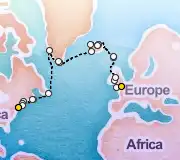
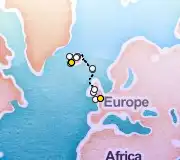
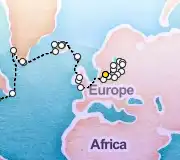
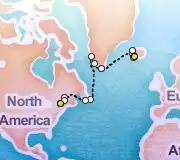





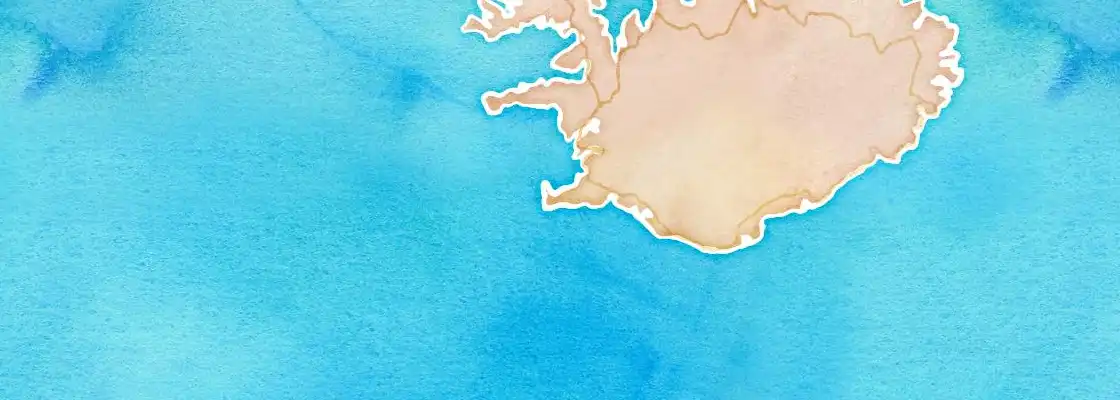
Showing 3 ships in the area
No ships scheduled in port today.
Prices are approximately the same throughout the year. On average Reykjanes is rather affordable as a port of call. Take a look at the graph below for the monthly average cost per day.
Want to hear about the best deals and cruise tips every week? Sign up for our free weekly VIP Newsletter, customized exactly to your preferences!